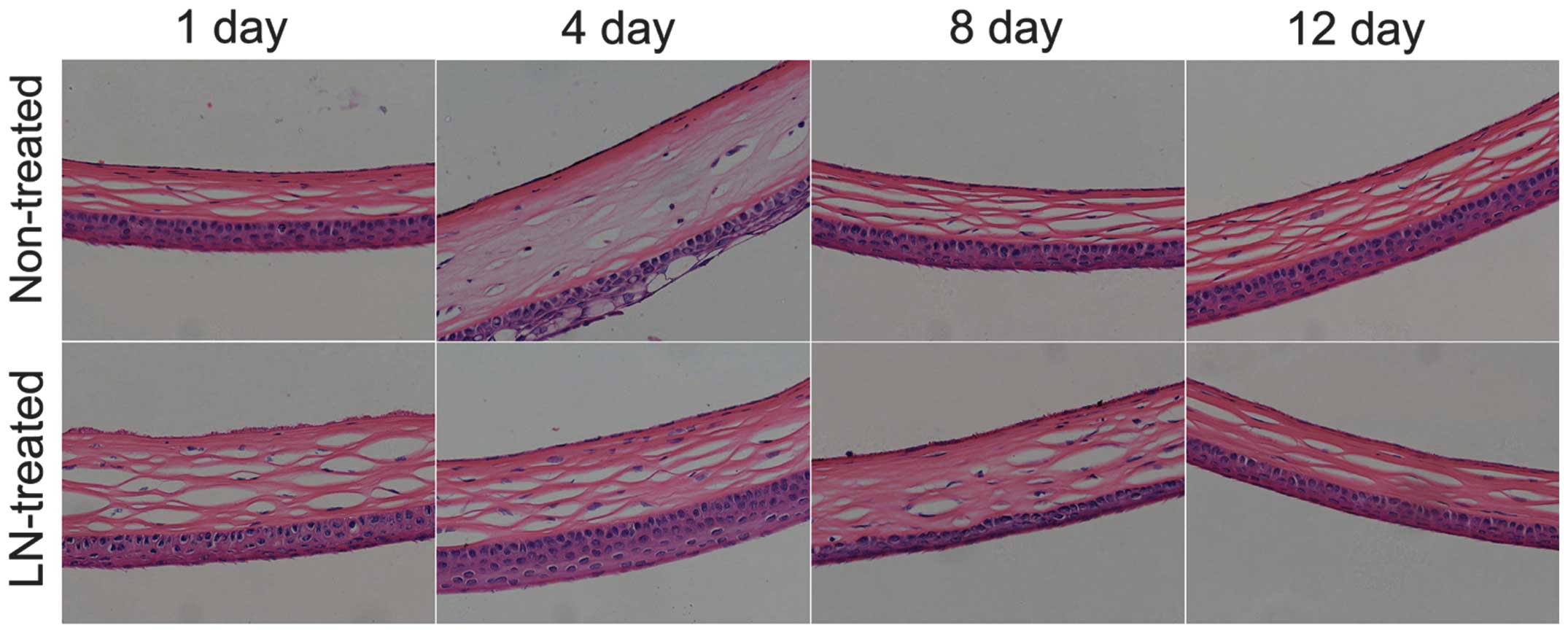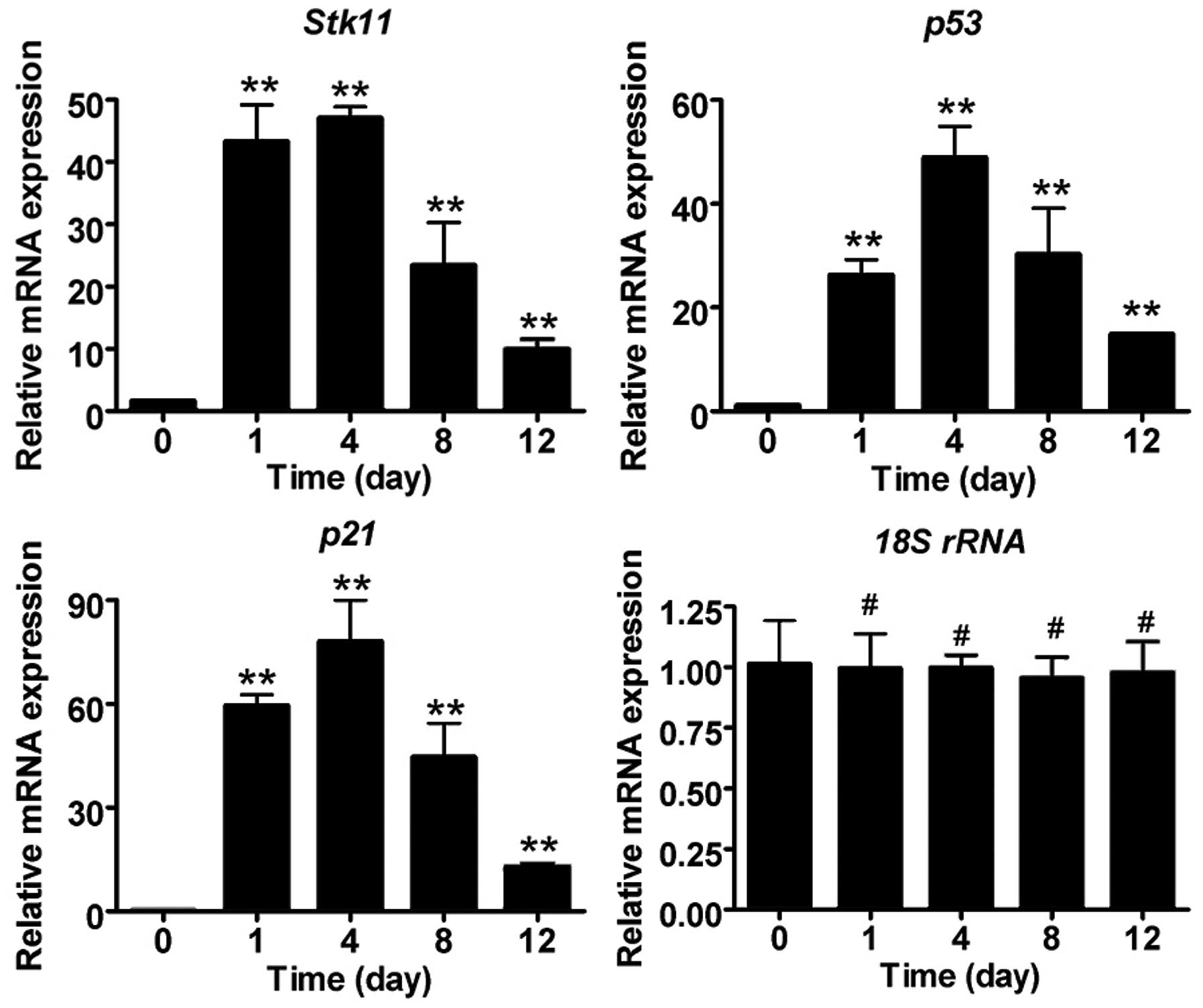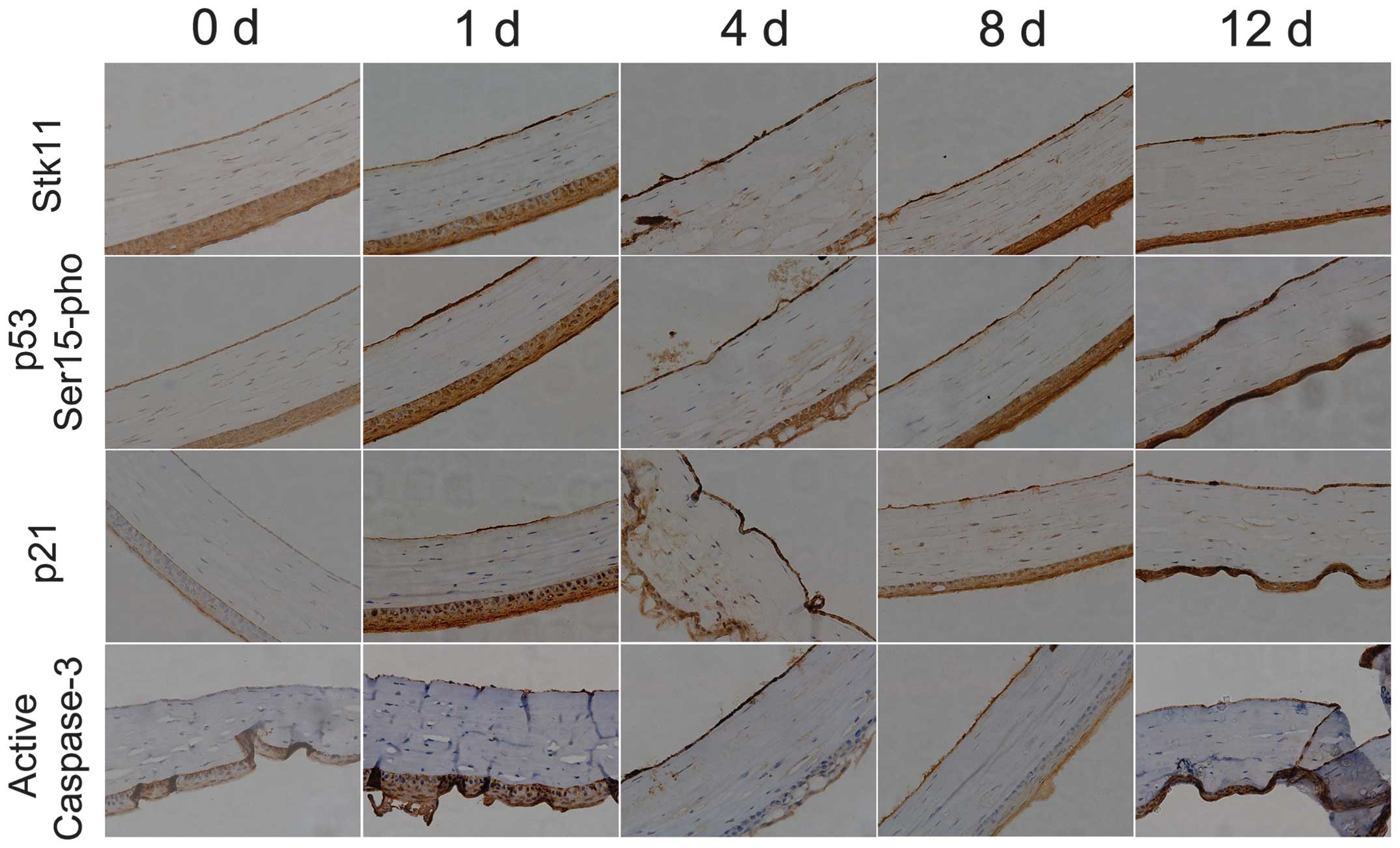
Low temperature induces cryoinjury in mouse corneal endothelial cells by stimulating the Stk11-p53 signal pathway
- Authors:
- Sijie Zhao
- Xinfeng Fei
- Te Liu
- Yan Liu
-
View Affiliations
Affiliations: Department of Ophthalmology, Shanghai First People's Hospital, School of Medicine, Shanghai Jiao Tong University, Shanghai 200080, P.R. China, Department of Ophthalmology, The Branch of The First People's Hospital of Shanghai, Shanghai 200081, P.R. China, Basic Research Laboratory, Shanghai Geriatric Institute of Chinese Medicine, Longhua Hospital, Shanghai University of Traditional Chinese Medicine, Shanghai 200031, P.R. China
- Published online on: September 9, 2015 https://doi.org/10.3892/mmr.2015.4301
-
Pages:
6612-6616
-
Copyright: © Zhao
et al. This
is an open access article distributed under the
terms of Creative
Commons Attribution License.
Abstract
Cryoinjury, or injury caused by extremely low temperatures, can occur in corneal endothelial cells (CECs) and lead to visual impairment. However, the mechanism of cryoinjury in CECs is not clear. The Stk11‑p53 signaling pathway regulates the proliferation and division of cells. Activity of the Stk11‑p53 signaling pathway arrests the cell cycle at the G0/G1 phase and induces apoptosis. In this study, a mouse model of cryoinjury in CECs was used. Following injury, significant mouse CEC death and shedding were observed. In addition, the mRNA and protein levels of core factors from the Stk11‑p53 signaling pathway (Stk11, p21 and p53) were elevated and Caspase‑3 was activated following cryoinjury. In addition, chromatin immunoprecipitation revealed that Stk11 catalyzed p53 serine 15 phosphorylation, and the Stk11‑p53 complex bound to the p21 promoter and stimulated gene transcription. Thus, the results of the present study suggest that cryoinjury leads to the damage and apoptosis of mouse CECs by activation of the Stk11‑p53 signaling pathway, phosphorylation of p53 serine 15 and p21 gene transcription.
View References
|
1
|
Mimura T, Yamagami S and Amano S: Corneal
endothelial regeneration and tissue engineering. Prog Retin Eye
Res. 35:1–17. 2013. View Article : Google Scholar : PubMed/NCBI
|
|
2
|
Williams KA, Irani YD and Klebe S: Novel
therapeutic approaches for corneal disease. Discov Med. 15:291–299.
2013.PubMed/NCBI
|
|
3
|
Joyce NC: Proliferative capacity of
corneal endothelial cells. Exp Eye Res. 95:16–23. 2012. View Article : Google Scholar :
|
|
4
|
Lam FC, Bruinsma M and Melles GR: Descemet
membrane endothelial transfer. Curr Opin Ophthalmol. 25:353–357.
2014. View Article : Google Scholar : PubMed/NCBI
|
|
5
|
Peh GS, Beuerman RW, Colman A, Tan DT and
Mehta JS: Human corneal endothelial cell expansion for corneal
endothelium transplantation: An overview. Transplantation.
91:811–819. 2011. View Article : Google Scholar : PubMed/NCBI
|
|
6
|
Hayashi T, Yamagami S, Tanaka K, Yokoo S,
Usui T, Amano S and Mizuki N: A mouse model of allogeneic corneal
endothelial cell transplantation. Cornea. 27:699–705.
2008.PubMed/NCBI
|
|
7
|
Han SB, Ang H, Balehosur D, Peh G,
Chaurasia SS, Tan DT and Mehta JS: A mouse model of corneal
endothelial decompensation using cryoinjury. Mol Vis. 19:1222–1230.
2013.PubMed/NCBI
|
|
8
|
Liang X, Wang P, Gao Q, Xiang T and Tao X:
Endogenous LKB1 knockdown accelerates G (1)/S transition through
p53 and p16 pathways. Cancer Biol Ther. 9:156–160. 2010. View Article : Google Scholar : PubMed/NCBI
|
|
9
|
Zeng PY and Berger SL: LKB1 is recruited
to the p21/WAF1 promoter by p53 to mediate transcriptional
activation. Cancer Res. 66:10701–10708. 2006. View Article : Google Scholar : PubMed/NCBI
|
|
10
|
Vaahtomeri K and Mäkelä TP: Molecular
mechanisms of tumor suppression by LKB1. FEBS Lett. 585:944–951.
2011. View Article : Google Scholar : PubMed/NCBI
|
|
11
|
Krock B, Skuli N and Simon MC: The tumor
suppressor LKB1 emerges as a critical factor in hematopoietic stem
cell biology. Cell Metab. 13:8–10. 2011. View Article : Google Scholar : PubMed/NCBI
|
|
12
|
Liu T, Chen Q, Huang Y, Huang Q, Jiang L
and Guo L: Low microRNA-199a expression in human amniotic
epithelial cell feeder layers maintains human-induced pluripotent
stem cell pluripotency via increased leukemia inhibitory factor
expression. Acta Biochim Biophys Sin (Shanghai). 44:197–206. 2012.
View Article : Google Scholar
|
|
13
|
Shen DZ, Xin SL, Chen C and Liu T: Effect
of atorvastatin on expression of TLR4 and NF-κB p65 in
atherosclerotic rabbits. Asian Pac J Trop Med. 6:493–496. 2013.
View Article : Google Scholar : PubMed/NCBI
|
|
14
|
Liu H, Zhang J, Liu CY, Hayashi Y and Kao
WW: Bone marrow mesenchymal stem cells can differentiate and assume
corneal keratocyte phenotype. J Cell Mol Med. 16:1114–1124. 2012.
View Article : Google Scholar
|














